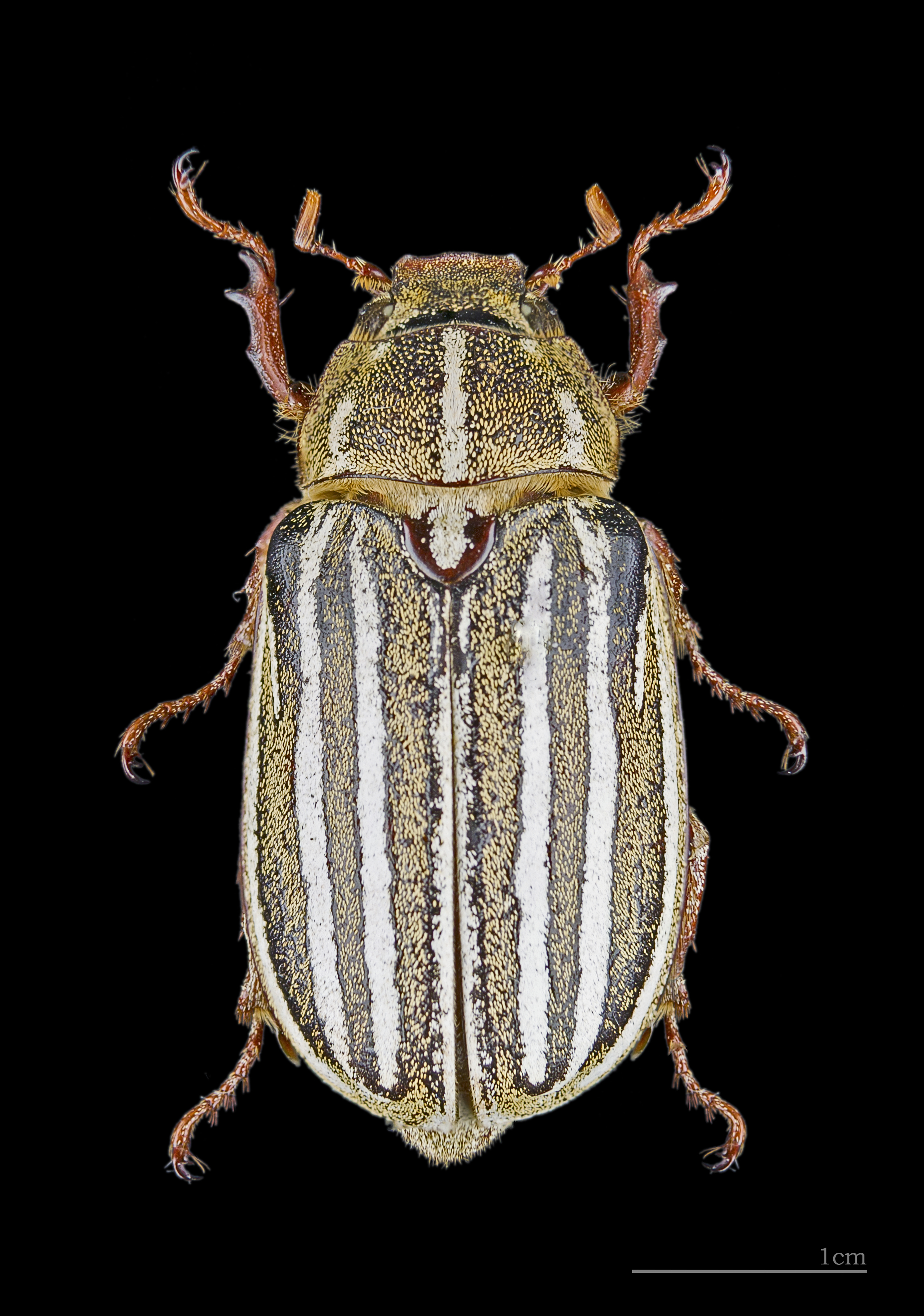They are relatively large in size, some growing to sizes as large as an 1.25 inches (3 cm) or more. As in other members of this genus, the males have large distinctive antennae consisting of several lamellate plates, which they close up when threatened. The antennas are used to detect pheromones emitted by the females.[2] The wing covers (elytra) have four long white stripes and one short stripe each. The underside of the thorax is covered with brownish hairs. This beetle does not bite. In some regions the meat of the scarab beetle is consumed as a natural aphrodisiac, however they are only edible if eaten raw. When cooked, the scarab beetle releases all of its toxins in concentrated amounts through the thorax. They can become numerous enough to be considered pests.












































































































